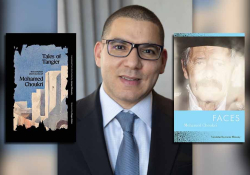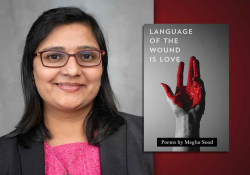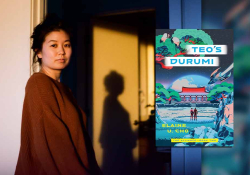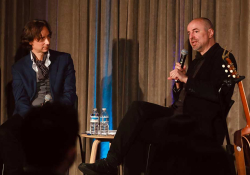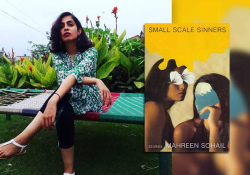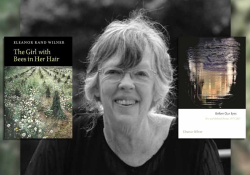The Tibetan Resistance Movement and Windhorse: In Conversation with Kaushik Barua
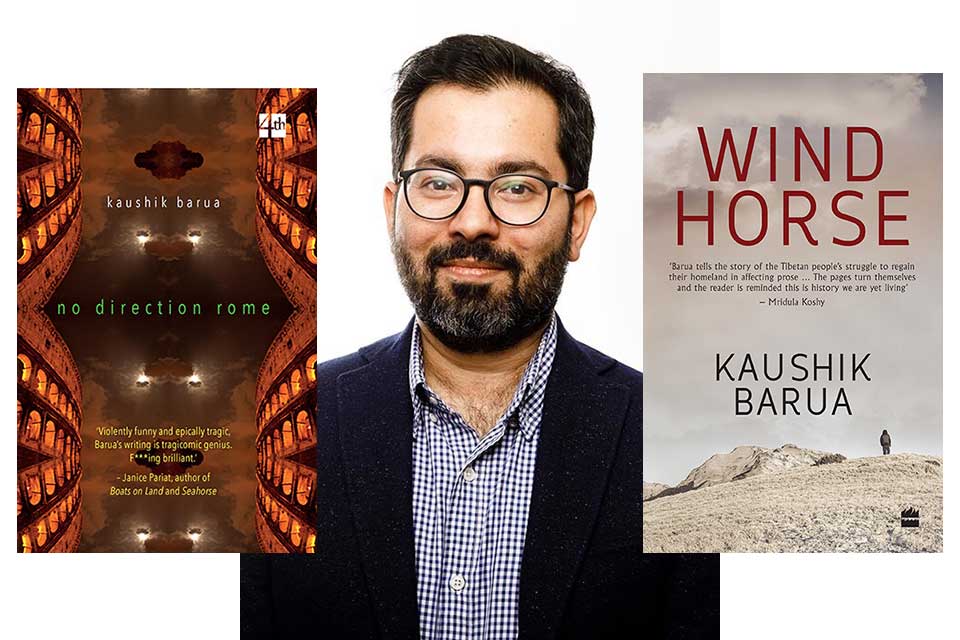
Born and brought up in Assam, Kaushik Barua is an emerging Indian English author. He completed his degree in economics from St. Stephen’s College, New Delhi, and then studied political economy at the London School of Economics. In his day job, he has been working in the development sector for the last fifteen years, managing and supporting rural development projects across West Africa, the Middle East, and East Asia. He works with an international development agency and is currently based in Hanoi, Vietnam.
Barua is the author of two novels: Windhorse (HarperCollins, 2013) and No Direction Rome (HarperCollins, Permanent Press, 2015). Windhorse is a work of fiction set against the background of the Tibetan resistance movement (1940s to 1970s). It fuses individual stories with the narrative of a community in exile. No Direction Rome is a dark comedy on the anxieties and disenchantments of the millennial generation. Barua has also contributed to the recent anthology, How to Tell the Story of an Insurgency (HarperCollins 2020). He won the Yuva Puraskar award from the Sahitya Akademi for Windhorse. He has written for Indian Express, The Hindu, The Guardian, Open Democracy, and other publications.
Koushik Goswami: What prompted you to write a novel about Tibet and its cause?
Kaushik Barua: As is often the case with significant life events, the origin of the novel was serendipitous. I used to travel to Dharamshala quite often on holidays, drawn by its views, the international cuisine, and the sense of calm I discovered in the place. Initially, I didn’t engage extensively with the politics of the settlement or its history. But, on one of my early visits (around 2006), I stumbled upon a bookstore, The Bookworm. I asked the bookseller for a recommendation, and he suggested In Exile from the Land of Snows, a nonfiction work that covers the modern history of Tibet through individual narratives. I found the entire text fascinating and had soon read a lot more on the period (I have a predilection for being obsessed with topics and digging deeper in an autodidactic frenzy). I found the accounts of the armed resistance movement very striking, especially the internal conflict that must have raged in the rebels—many were both practicing Buddhists and nominally committed to the idea of nonviolence as well as active rebels who had taken up arms for their political goal of self-determination.
When I returned to Dharamshala and met the bookseller again, I mentioned that I enjoyed his recommendation and, in particular, the chapter on the resistance movement. As it turned out, he was in the armed guerrilla movement. He’s also a leading Tibetan poet. The bookseller—who introduced me to the book that in turn led me to his life—was Lhasang Tsering and the initial inspiration for Windhorse. Of course, I then expanded my canvas to cover the mid-1900s and the entire struggle. Given that I was not an academic or historian, I decided to employ the tool I could wield most effectively: fiction.
Of course, while the origins might seem accidental, the actual writing involved a lot of effort and a constant reexamination of the novel and my role as its author.
Goswami: Why did you use a map at the very beginning of Windhorse? A map is not usually a part of novelistic conventions.
Barua: Except for activists or academics who have worked extensively on Tibet, many of the places that I cover in Windhorse are not familiar to the general (or even the relatively well-informed) reader. So, my primary purpose was to guide the reader. I didn’t want the reader floundering with the names of places or regions. Also, the personal narrative arcs of the characters in Windhorse are literal journeys as well: Lhasang moving from his village in Kham, Riwoche, to the refugee camp in Tezpur, Assam, to an itinerant life with a road construction gang, to training camps in India and the US, to Mustang in Nepal.
There is a similar journey for Norbu, but in reverse, starting as an outsider, a Tibetan expatriate who grew up in Delhi, to joining the movement to the recruitment drive in Bylakuppe in South India and onward to the US and Nepal. The characters lose and then try to regain a sense of home and community. The loss and their attempts at recovery occur through actual physical displacement and movement. I think placing the map at the beginning and its vast spread gave the reader a sense of the displacement the characters (and, by extension, the entire community) experienced through those decades.
Goswami: As a novelist who is an “outsider,” what representational strategies did you adopt to present a picture of Tibet and its people in Windhorse?
Barua: This question lingered at the top of my mind, and its influence seeped into the entire process, across the five-odd years I spent on Windhorse. I was aware of my “outsider” status. As we know from current debates on cultural representation and storytelling, the outsider has to be sensitive to the histories, experiences, aspirations, and marginalization of any community s/he is presenting.
I wanted to ensure, first, that I conducted extensive consultations with the actual participants in the historical moments that were covered in Windhorse. So, I met the ex-rebels now scattered across Dharamshala and Majnu ka Tilla. I wanted to place their experiences and views at the center of the narrative. Second, I didn’t use the first-person voice, somehow feeling that privilege should lie with someone whose real-life experiences more closely mirrored those of the characters. Third, I was rigorous with my research, trying to be accurate with the details or nuances of the historical or geographical context. For instance, I sent the early draft of a few chapters to a Tibetan friend who pointed out that the phrases used in Tibetan needed to reflect provincial variations. Finally, I steered clear of any stereotypes, negative or positive. There was the perception of Tibetan society as “premodern.” But the phrase itself is problematic since modernity is not a linear process and is a nebulous idea in itself. Tibetan traditions weren’t compared to any “global” norms (the “global” in popular discourse is of course actually shorthand for only Western or Anglo-Saxon) but presented as they were, as acts or traditions that made sense in their context. Characters were also presented with flaws and all—no easy characterization as a peace-loving religious person or as a warrior.
Of course, I can only attest to my own commitment toward sincerity. Only the Tibetan community can say whether my strategies and efforts worked. I believe the book and the characterization were well received by the Tibetan community.
Goswami: In an interview, you talked about “honesty” and “sincerity” in representing Tibet in Windhorse. How would you explain these two words?
Barua: This ties in with what I wrote above. As an outsider writing about another community, and about the most tumultuous period in the community’s recent history, I had to ensure I represented their reality with as much nuance and sensitivity as possible. Developing this clear-eyed empathetic tone in a work of fiction is not only a matter of intent (the intent being “honesty”) but also a matter of effort—iterative, self-aware, determined effort (therefore the “sincerity”).
Of course, this twin formula of honesty and sincerity applies to all works of fiction. One needs to be honest to the original intent and to the characters, whether they’re based on real struggles or complete inventions (often characters in novels are a composite of reality and imagination).
This twin formula of honesty and sincerity applies to all works of fiction.
Goswami: How much are you emotionally involved with the Tibetan cause? How do your perspectives differ from those of the Tibetan writers in exile?
Barua: I am emotionally invested in the movement. I was closely involved with some organizations, in particular the Students for a Free Tibet, over many years, and I am still in touch with writers, poets, and friends from the community. My perspective would differ from some Tibetan writers in exile because I have not personally experienced the displacement and the persistent questions regarding multiple identities. Also, there is a lot of debate about the approach and tone the community in exile should adopt with regard to its cause. As an outsider, I express sympathy for the cause but don’t explicitly express opinions on these questions.
Goswami: Tibetans are often stereotyped and exoticized in films, literature, and in other mediums of expression. Did you have this in mind while writing the novel?
Barua: Yes, absolutely. This was a prime concern while working on the novel. I had seen many stereotypes of Tibetan characters onscreen and in print. Typically, these revolved around the peace-loving, prayer-wheel-spinning Buddhist image, the Tibetan as an enlightened being whose concerns lie above the daily struggles of politics or economics or livelihoods. This can be categorized as a “positive stereotype,” but of course any stereotype takes a toll on a community, by flattening their existence into one narrative. I think this is one reason the story of the actual armed struggle never received much attention—because it contradicts the globally accepted stereotype of the Tibetan. I think Windhorse, with its focus on the guerrilla resistance, helped undermine this stereotype with its subject and background.
Any stereotype takes a toll on a community by flattening their existence into one narrative.
Goswami: What kind of research and other preparations did you take before writing Windhorse?
Barua: I started preparing for Windhorse with the curiosity and zeal of an academic. I was very keen to get the details and the historical/ geographical context right. This would help me accurately re-create the atmosphere, and therefore the cultural norms and values, that provided the impetus or conflict for the characters. Also, given that this was the first work of fiction on the resistance movement, I felt responsible for developing enough heft and authenticity to the political moment and the geopolitical tensions that gave rise to the moment.
So, I trawled through archives (in libraries in Delhi or resource centers and institutes in Dharamshala, often gleaning details on the lifestyle, food, culture, geography, and quotidian political and social processes in the region), went through reams of video footage from the times (including documentaries shot by Tenzing Sonam and Ritu Sarin), devoured the works of Tibetan scholars who had examined urgent political questions (such as Jamyang Norbu and Tsering Shakya), and spoke to the poets and activists of our generation to get a sense of how losing their homes has persisted across generations (poets such as Tenzin Tsundue and Bhuchung Sonam, and the activists such as the young voices behind SFT). And, most importantly, I spoke to the people who were actually involved in the movement, including Lhasang Tsering who was generous enough to share his story with me, and the members of the Chushi Gangdruk (the group on which the force described in Windhorse is based).
But after I had finished a first draft, I realized the research-driven background and context had overwhelmed the narrative. There was too much detail, too many finely outlined accounts of historical accounts, but not enough about the internal lives and journeys of the characters. I undertook a massive redrafting exercise and actually stripped away a lot of the background and added personal details, conflicts between characters, personal motivations (that were personal or familial in nature, not directly connected to the broader context). I reminded myself that the first responsibility and privilege of being a fiction writer is to breathe life into a character.
I hope the result is a well-balanced blend of the two: the broader history that drove the movement but also an account of a few people who decided to seize control of their lives in the most trying circumstances.
I reminded myself that the first responsibility and the privilege of being a fiction writer is to breathe life into a character.
Goswami: In Windhorse, America does not support the Tibetans till the end. Why did you do so? To be faithful to history?
Barua: (In keeping with current pop culture and reviewing norms, I should add the warning: “spoiler alert for readers.”) Yes, the betrayal by the Americans at a crucial point in the narrative is consistent with history. Through the novel, I wanted to make sure I stuck to the main events and recorded them as they happened. The dates of the major battles in the 1950s, the period and broad dimensions of the Dalai Lama’s escape from Tibet, the establishment of the Majnu ka Tilla settlement or of Dharamshala, were all presented as they happened (or at least as per the broad consensus of historical records; as we know, all histories can be contested in hindsight). So, I kept the American decision and withdrawal of support in the novel as well (though, of course, the characters involved and specific details are fictionalized).
Goswami: How would you explain India’s support toward the Tibetan cause?
Barua: There has always been a broad base of emotional support for Tibet in India. This stems from the ancient cultural and spiritual links that are embodied in and evoked by the presence of the Dalai Lama in the country. I don’t have access to specific data, but anecdotally, most middle-class Indians I have spoken to and who are familiar with the general history of the region are sympathetic to the cause. By hosting the Dalai Lama (who is a very revered figure in India, irrespective of whether one is an adherent of the Buddhist faith or not), India has signaled its cultural affinity to Tibet.
But this support from the streets has not translated into geopolitical support from the state. Since the period covered in Windhorse, India has not offered explicit strategic support (neither has any other country). While the spate of self-immolations a few years ago garnered a lot of international media attention, it generated negligible actual political support by the international community. Of course, the state’s support has grown and waned over the years depending on broader geopolitical and commercial considerations. Such is the nature of realpolitik. Now that there are renewed tensions in the region, perhaps we will see a renewed interest in, and perhaps even greater support for, the cause in India.
Goswami: Why have you chosen the title Windhorse? Does it demand some knowledge on the part of readers?
Barua: The phrase Windhorse derives from lung-ta, literally wind-horse in Tibetan. It refers to the prayer flags that one sees fluttering across ridges in the Himalayan region. In the center is the mythical creature of the wind-horse (which probably had pre-Buddhist origins, but then was associated with the Tibetan Buddhist faith). The wind-horse carries the three jewels of the faith on its back: the Buddha, the dharma or the faith, and the sangha or the monastic community.
Of course, as a symbol, it also represents the aspirations of a community, the wind-horse carrying the repositories of the faith. The symbol evoked a rich history of faith (a faith that, though fragmented in sects and practiced with variations across its wide reach, was central to the broader community-nation of Tibet). Also, it is recognizable, in its common form, to the general reader (at least those with some familiarity with the region or culture) and suggested a journey, an idea that matched the central theme of the book. The title actually struck me after I had finished the first draft, so it emerged from the text.
I don’t think it demands much from the reader. It’s an unfamiliar phrase, but not a foreign word and not totally indecipherable (one can perhaps guess that it alludes to a journey and a mythical beast, and that it probably stems from the Tibetan culture).
Goswami: You won the 2014 Sahitya Akademi Yuva Puraskar for Windhorse. How did you feel when you received the news?
Barua: I was obviously delighted. It felt like a huge validation and recognition for the work and for the novel. I kept in mind when it was announced that the novel also drew its power from the historical struggle of the Tibetan community upon which it draws.
However, over the years, as the award became a settled fact in my life, I realized I shouldn’t cling to the identity of an award-winner. The award signifies the expectation of the award committee, an expectation that I wish to fulfill with future works. But an award could also be suffocating; an author could be pressured to only produce a certain kind of work. I always remind myself that an award is at one level an arbitrary recognition, given to a few but denied to many more who may be more deserving.
Goswami: How do you see Tibet as a “nation,” both in terms of the past and the present?
Barua: This was a constant question during the research phase of Windhorse. That was a decade ago now. I’m responding with the broad impressions that stayed with me. The region now known as Tibet may not have displayed some of the features associated with a modern “nation-state,” such as the ability of a central power to exclusively impose taxes or monopolize the use of violence. For instance, many communities in the eastern province of Kham were martial, and there was often conflict for resources. Political loyalty was split between different authorities, including Lhasa and other powerful chieftains. But this was a feature of many societies and geographies. The extent of influence China exerted in the region also fluctuated through the centuries.
But it was clear that the region had a distinct culture and a shared identity. The institution of the Dalai Lama and the Tibetan Buddhist faith played a key role, but so did the language, the religious and cultural features and iconography, the social norms that were shared across the Tibetan plateau (and beyond, with some cultural norms bleeding into others across areas such as Mongolia or Central Asia). So, it was a nation of the mind, an “imagined community,” to borrow from Benedict Anderson. In terms of the present, of course, there is no international recognition, and with demographic and economic developments over the decades, the region has probably been integrated into China. But as the spate of immolations showed, fault lines still persist. And outside the region itself, the diasporic community is persistent with its hope of an eventual return to a more autonomous Tibet.
Goswami: Networking plays an important role in the present. I have come across many Tibetan networking sites/blogs/Facebook sites. What roles, according to you, do these sites play in the formation of a nation?
Barua: Yes, there are many organizations and networks that keep the cause and the idea of the Tibetan nation alive, and of course the Government in Exile itself in Dharamshala. They help mobilize support for the cause. I think with the Tibetan diasporic community increasingly spread across countries, with many now the second or third generation born outside Tibet, such communities and networking sites play a huge role in preserving the notion of a community that belongs to Tibet and would one day return. I know that there are also strong real-world networks, with get-togethers and community events organized across India and Europe, since offline networks often undergird virtual networks.
Goswami: What is the efficacy of the idea of a “virtual nation”? Do you think that networking can create positive/negative effects on the Tibetan freedom movement?
Barua: These are new and indecipherable times for all of us in the online world. Communities, political ideologies, strains of nationalism and ethnic identity (sometimes with sharply exclusionary undertones targeting the identified “outsider”) are rapidly being built and reshaped online. The repercussions of these sites are difficult to assess. I would think they are broadly positive for the community.
When we speak about the movement, the cause has evolved over the decades from independence to greater autonomy and cultural/identity preservation (this is my observation; you would have to ask stakeholders from the community to get a truly representative view from the community; communities are also heterogeneous as are opinions within communities). Given geopolitical shifts, I imagine a more realistic option is for greater autonomy for the region within China, the so-called Middle Way promoted by the Dalai Lama. As per the policy, this would safeguard some of the vital interests of the community regarding culture, religion, and identity, while not actively undermining China’s territorial integrity.
Goswami: Do you consider the Himalayan region as a unique sociocultural space? Do you think there are common grounds between the peoples of the different Himalayan nation-states? Or do you think that the mountain range acts as a barrier? Can there be pan-Himalayan emotions and feelings?
Barua: From my reading and understanding of the region, I would think so. There are many similarities across the region: the confluence of cultures (Tibetan Buddhist, Indic), modes of interaction between people and their environment (similar livelihoods and geological environments are seen from Ladakh to Tibet to Arunachal), and contestations between great powers (since these are inaccessible regions, central authority from larger states slacken in these areas, giving rise to ambiguous borders and loyalties). The mountain range acts as a barrier beyond the ranges (in the plains). But that’s natural, because cultures evolve historically based on their environments, which often determine agricultural systems, economic modes of production, and consequently forms of social organization. I can’t confidently comment on whether there would be a pan-Himalayan emotion; I assume there will be as many differences as similarities across such a wide geography.
Goswami: Why did you move to a different territorial space in No Direction Rome? What has inspired you to write this book?
Barua: First, I was based in Rome at the time. Between the time I had started writing Windhorse (2005–2006) to its publication (2013), I had moved to Rome for a job with a United Nations agency. (To clarify, that’s my day job, and not related to my writing, which is a completely personal passion, and the messages or opinions folded into my fiction don’t reflect those of my employer organization.) Second, after the intensive research spanning across years that Windhorse demanded, I wanted a change in pace and perspective. I was still primarily interested in the craft of writing and wanted to flex my literary muscles. I decided to try a completely different form and genre.
Therefore, with No Direction Rome, I adopted a dark comedy written in a stream-of-consciousness voice. No Direction Rome was a literary experiment, an attempt to create a fragmented, disillusioned voice that meandered across a plotless narrative, the primary character more obsessed with his own obsessions and body than the world at large. It was an attempt to mimic the solipsistic, self-deifying, splintered world of social media. Random imagery and ruminations are scattered across the text, the sentences and conversations are clipped, and there are no quotation marks to distinguish dialogue from the narrative. I wanted to portray the angst of the millennial generation, the phrase “millennial” of course being a nebulous category; by some definitions, I am at the outer older edges of the generation. I hope I succeeded.
Goswami: Do you have any future plans to write more about Tibet or other regions like Nepal, Bhutan, or Assam?
Barua: I have a story set in Assam in a just-released anthology. Released during the Covid-related lockdown, and carefully curated by my fellow author from Assam, Aruni Kashyap, the HarperCollins anthology How to Tell the Story of an Insurgency covers the insurgency in Assam and a generation that had got used to deprived freedoms much before 2020, growing up through army curfews and checkpoints and bandhs (protests) and bomb blasts. The collection presents a diverse set of voices from the region and will probably be a valuable archive of the decades of conflict in the state, spanning across the 1980s and 1990s.
I want to build further on my personal experiences and the political churn in the region and write a full-length nonfiction book on Assam. This will perhaps be written next year and will disentangle some of the messy questions around identity, ethnicity, nationalism and subnationalism, and citizenship that have been plaguing the region for decades. I don’t have immediate plans to write a piece on Tibet. But I hope someday to return to Tibet as an author, perhaps with a happier tale to tell.
Goswami: If you were writing the book at the present moment, when the tension between India and China has reached its height, would you have given the novel any new dimension?
Barua: In Windhorse, I tried to focus on individual characters and families, tracing the personal repercussions of global events and the grand strategies employed by nations. As a fiction writer, I am most interested in how such events translate into personal and intimate narratives of loss, hope, or redemption. How ordinary people try to regain agency in the midst of geopolitical shifts.
In the current context, with heightened tension between India and China, there might have been a temptation to place the narrative in a more statist framework, placing India and China in quasi-adversarial stances. But I hope I would have resisted the temptation and stuck to how all national visions of expansionism (in terms of territory or influence) and belligerence, be they American or Chinese or Indian, have human costs.
Windhorse is a human story, but one placed squarely in the middle of these contested histories and geographies.
Goswami: Do you think that the new Indo-China conflict has made your book Windhorse much more relevant to the present readership?
Barua: Yes, absolutely. The current tensions also stem from ambiguities in the border areas of the countries. Large nation-states comprised of multiple and varying communities and geographies often concentrate their power in the dominant class and geographical areas. The communities in the margins are distant from both the power and the imagination of the nation (as someone who has grown up in the Northeast of India, I am familiar with this sense of exclusion).
In that sense, Windhorse follows communities from the far-flung areas of the Tibetan plateau (far-flung if seen from the perspective of the larger global powers), communities that were hurtled into a nation-state framework with great human costs. Of course, Windhorse deals with ambiguous borders, these borders basically being arbitrary lines drawn by colonial administrators without consultation with or consent from the affected people.
These contentious issues have been at the heart of Indo-China relations for decades (at least since the 1962 war). Windhorse is a human story, but one placed squarely in the middle of these contested histories and geographies. Therefore, a reader who stumbles upon Windhorse now would find it extremely relevant.
Goswami: If you want to add anything on your writing career or anything else, it would be most welcome.
Barua: I think the above captures my writing efforts and vision so far. I am still building my body of work and hope to reflect the struggles around identity in a rapidly changing world with my writing. I also wish to examine political shifts that have human consequences and capture them with personal narratives.
April–July 2020
Author’s note: All opinions expressed in this interview are the author’s personal views and do not reflect those of any organization.

